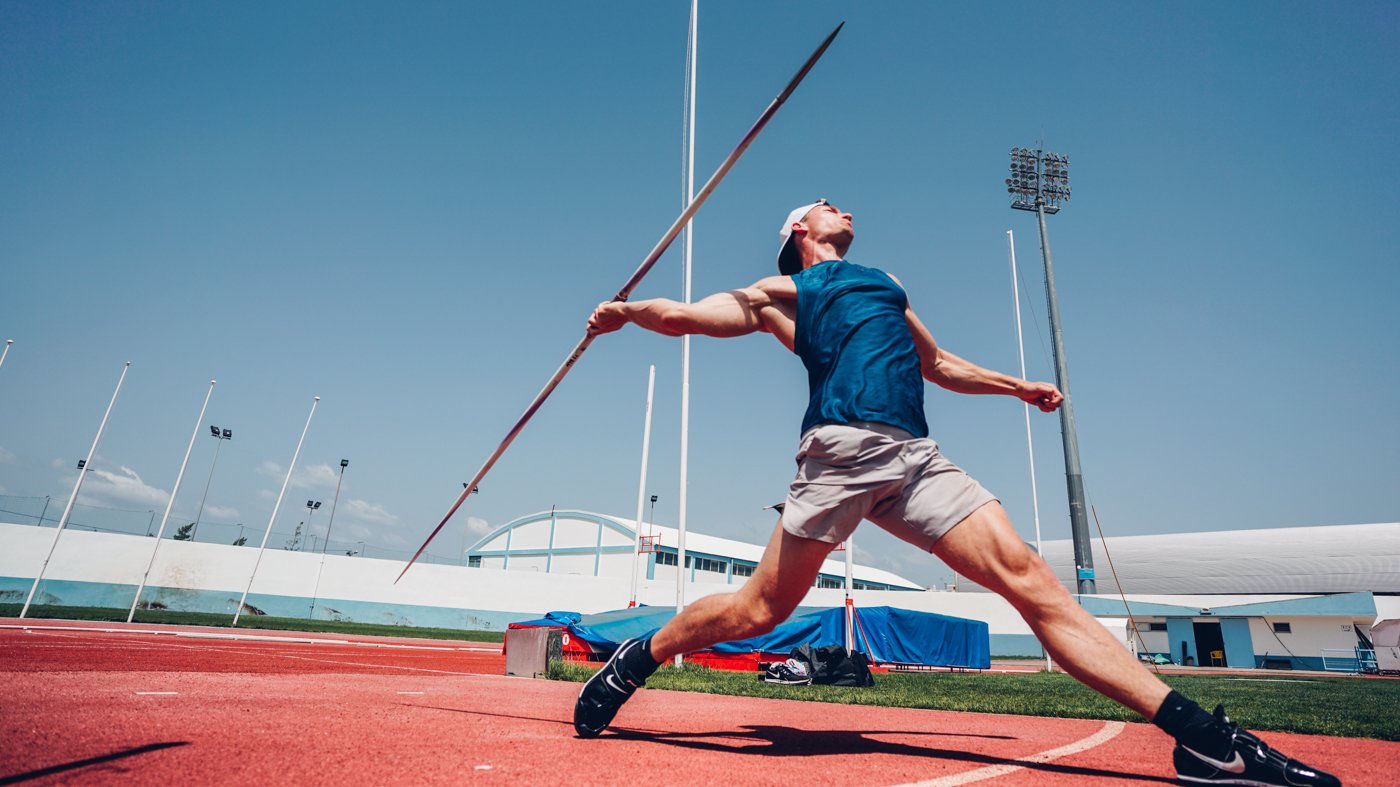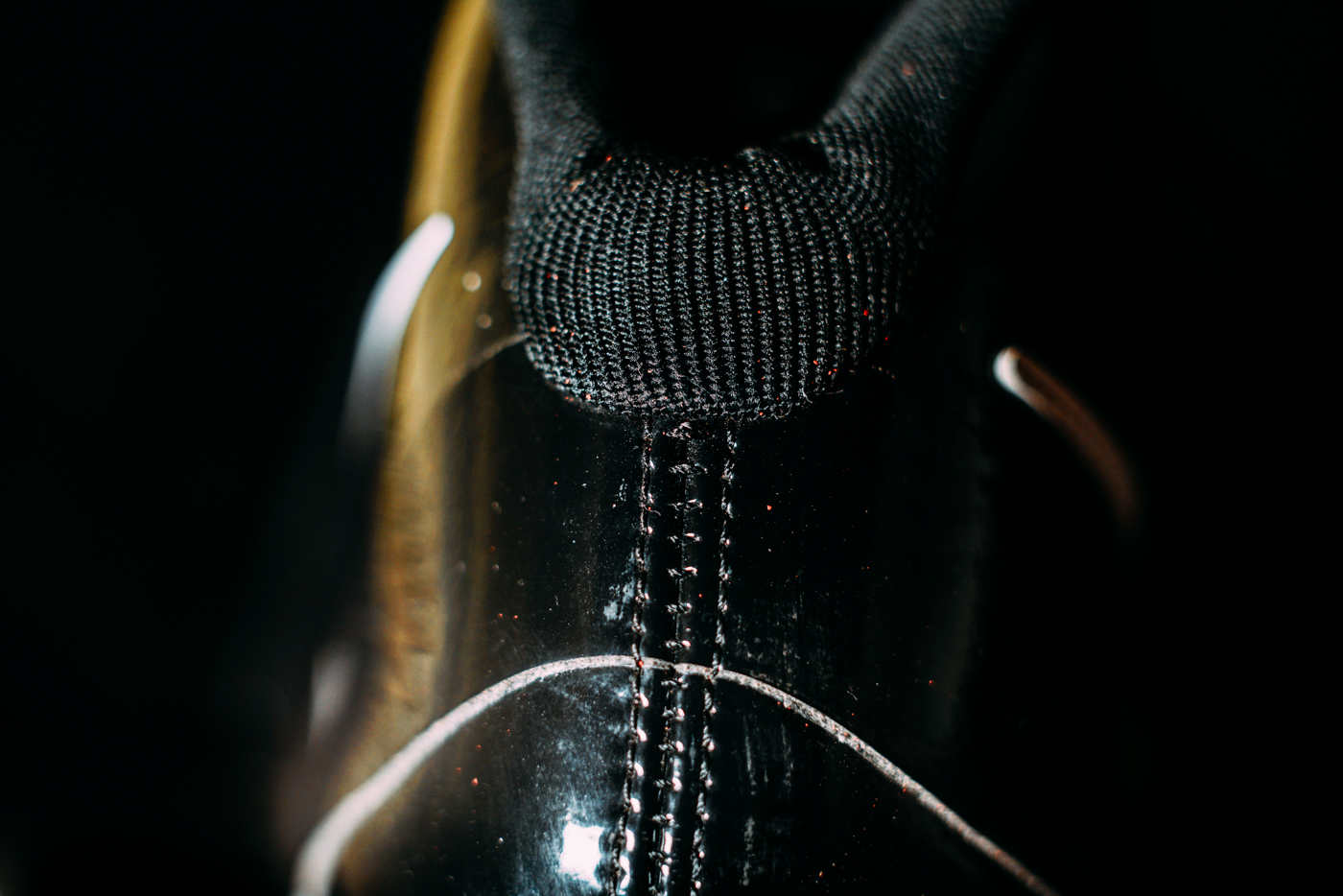In athletics special shoes are used, the so-called spikes. But each discipline is different and so are used in the javelin perfectly adapted javelin spikes. In the article I would like to help you learn more about javelin throwing shoes. Then we have a look on how to make a smart purchase when getting new gear for next season.
Many start with allround spikes
When you start with athletics you start with so-called allrounders, spikes that promise more performance and better comfort for every discipline. Due to the pins one has a safer hold and grip compared to normal footwear especially when wet. In the multi-discipline in the pupil and youth area, good all-rounders always pay for themselves simply because of their pleasantly light weight.
But beware! Looking at the movement in the javelin throw, we recognize a high importance of the block with the hit on the heel. Looking at the general spikes, we find in the area just a little hard foam and rubber. This wears off very quickly when throwing and the shoe shows no performance in other disciplines any longer.
Why javelin spikes?
As described in detail in the article on the block leg action, high loads are applied to the brake foot or, better yet, the blocking foot. These are desired and must be well intercepted or stopped. For this you definitely need a special shoe to prevent injuries and to be able to put the full energy into the javelin throw.

Properties of javelin throwing spikes
Let’s have a look at the design and structure of the special javelin throwing shoes compared to the allround spikes. Immediately the somewhat chunkier, broader basic design stands out. Often one finds an almost boot like cut shoe. Everything in the sense of stability. The shoe is designed for full support of the movement and is intended to prevent injuries. Sometimes this is a bit of a burden and the athlete has to decide for himself how much weight he feels comfortable with a shoe.
What to look for when buying javelin spikes
Spikes do not necessarily have to be super comfortable, they should serve a purpose. A common discussion I have had to explain in my career is that a javelin spike is definitely not an everyday shoe. If you look closely, you will even see that I often take off my spikes in competition. Simply because they are very tight and stiff. This is good for full power and good energy transfer.
How I judge javelin spikes:
- Solid quality
- 4 pins in the heel area and pins in the front area
- A sturdy yet flexible sole
- A stable front area with protective cap
- Soft interior for the big toe
- Good lacing
- Good grip on the instep and inside of the foot
- Pleasant Achilles’ neck area
(here very important – try out if you can tolerate a high shoe well, whether any seams can push into the Achilles)

High Cut or Low Cut
That is a matter of taste and not to answer blanket. I myself have already thrown with both variants over 85m and each had a good feeling. Currently I use a higher, but not very high left boot (NIKE Javelin ELITE II / III) and a slightly shallower right shoe for more feeling. Two equally high shoes are also pleasant and good to throw. In the end it is an individual habituation thing.
High jump spikes for javelin as an alternative?
Yes, I realized my first u20 WC qualification in NIKE high jump spikes. As a beginner I liked the easy pleasant feeling, unfortunately high jump spikes do not withstand many throws. The front area in particular quickly scratches due to the typical toe front sliding of the pressure leg. Also, the necessary lateral stability is not given by the extremely flat cut and narrow sole. So, in an emergency it works, but for the aspiring athlete in the javelin throw and better multi eventer it is worth the investment in javelin spikes definitely.
Taking care of javelin spikes
After the javelin spikes leave their beautifully clean, mostly colorful cardboard box, hard work awaits them. That’s a good thing, because that shows that they landed in the hands of a motivated athlete.

How to screw in spikes / pins
So that you enjoy the javelin throwing shoes for a long time, I recommend you to add a little oil to the threads before the thorns are firmly screwed in. If no workshop oil is on hand also normal bright kitchen oil works just fine. This is simply sprinkled on an earwax stick and rubbed into the thread. The hand cream from the hotel bathroom even had to work in competitions – but no matter how, fat belongs in the thread. Why? After some throws on the track and green, you will notice that the pins are gradually becoming dull. No problem, but it should be fresh thorns for the competition. Without oil you then have a problem, because of dirt and moisture by throwing on gravel and grass, the thread quickly foxed and in the worst case, the thorns rust.
The upper of your shoe you should always be wiped clean with a damp cloth, which protects against a premature ugly look in the competition.
Later you will have spikes for indoors, grass and various tracks, but at the beginning it was also very good for me to take good care and grooming the “babies” always.
Durability of the special shoes
Often I am asked when a javelin throwing shoe counts among the veterans and allowed in the showcase. It depends on the field of application and the level you are throwing. For training purposes on the lawn usually a large crack in the upper material stops the use. This happens after more than 3 years or longer of very intensive use. In normal competition and practice, you can definitely plan with 2 seasons per pair. Often more, depending on the technique and track conditions. Also the number of throws makes a big difference to the lifetime. Logically, the quality of the javelin spike itself is crucial.

